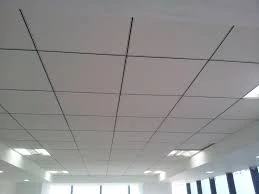10 月 . 12, 2024 12:23 Back to list
Guidelines for Installing a Ceiling Access Panel in Your Home
Installing a Ceiling Access Panel A Step-by-Step Guide
Installing a ceiling access panel can be a straightforward task that enhances accessibility to hidden spaces such as attics, plumbing, and electrical wiring. Whether you need to perform routine maintenance or require emergency access to critical utilities, a ceiling access panel allows for easy entry without the need for extensive remodeling. This guide will provide you with step-by-step instructions to ensure you can successfully install a ceiling access panel in your home or building.
Materials Needed
Before starting, gather the following materials - Ceiling access panel (size appropriate for your needs) - Measuring tape - Pencil - Utility knife or drywall saw - Level - Stud finder - Screwdriver - Drywall screws - Drywall tape and compound (if required)
Step 1 Choose the Right Location
Selecting the right location for your access panel is essential. Identify the area you need to access and ensure it does not interrupt any structural beams or electrical components. Using a stud finder, check for ceiling joists to avoid cutting through them. It's advisable not to install the panel directly over light fixtures or in areas with heavy foot traffic above.
Step 2 Measure and Mark
Once you've chosen the ideal spot, use a measuring tape to determine the size of the access panel you want to install. Most panels come in standard sizes, such as 14x14 inches or 24x24 inches. Using a pencil, mark the outline of the panel on the ceiling. Make sure the markings are level, as an uneven panel will look unprofessional and could cause functional issues.
Step 3 Cut the Opening
With the outline marked on the ceiling, it's time to cut the opening. Use a utility knife or a drywall saw to carefully cut along the lines you've marked. Make sure to cut slowly and with caution to avoid damaging surrounding drywall or joists. Once the hole is cut, inspect it to ensure it's the right size for your access panel.
installing ceiling access panel

Step 4 Install the Access Panel Frame
Most access panels come with a frame that needs to be secured to the ceiling. Align the frame with the opening you’ve created and use a level to ensure it is straight. Secure the frame to the surrounding drywall using drywall screws. If your access panel includes a latch, verify that the latch mechanisms fit into the frame securely.
Step 5 Insert the Access Panel
After the frame is securely attached, it’s time to insert the access panel itself. Carefully slide the panel into the frame and ensure it fits snugly. Most panels are designed to be easily opened and closed, so test the hinges or latching mechanism to ensure they function smoothly.
Step 6 Finish the Installation
If your access panel requires additional finishing, use drywall tape and compound to blend the edges with the surrounding ceiling. Apply the compound, let it dry, and then sand it down for a smooth finish. Finally, you may want to apply paint to the area around the panel to match the ceiling, helping to camouflage it and make it less noticeable.
Step 7 Clean Up
After the installation is complete, clean up any debris from cutting drywall and dust from the sanding process. Ensure the area is safe and tidy.
Conclusion
Installing a ceiling access panel can greatly improve the accessibility of your home while maintaining a clean and finished appearance. Following these steps will help ensure the installation process is straightforward and effective. With the right tools and a bit of patience, you’ll have a functional access point that will serve you well for years to come. Whether for maintenance or emergencies, a ceiling access panel is a valuable addition to any building.
-
Revolutionizing Interior Design with Ceilings t grid Suspended SystemNewsOct.29,2024
-
Revolutionizing Ceiling Design with ceiling access panel with Gypsum Tile WaterproofNewsOct.29,2024
-
Revolutionizing Interior Design with PVC Gypsum Ceiling: A Comprehensive GuideNewsOct.29,2024
-
Elevating Interior Design with High quality Mineral Fiber Ceiling TilesNewsOct.29,2024
-
Revolutionizing Interior Design with PVC Gypsum Ceiling: A Comprehensive GuideNewsOct.29,2024
-
Elevating Interior Design with High-Quality Mineral Fiber Ceiling Tiles: A Comprehensive GuideNewsOct.29,2024







